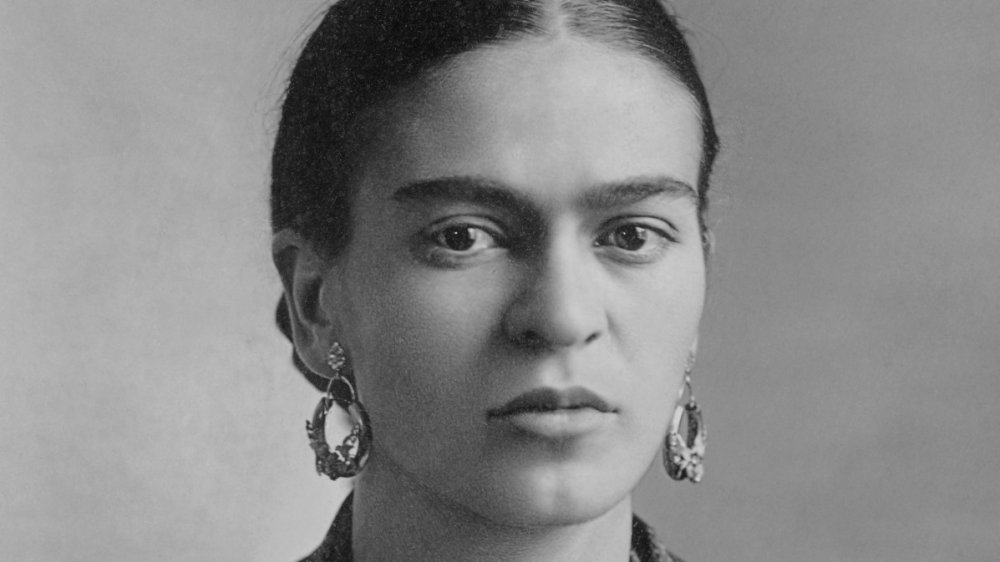The Tragic Death Of Frida Kahlo
The paintings of 20th-century Mexican artist Frida Kahlo are known for both the magical realism that sprung from the artist's love of her heritage and their unflinching look at the pain Kahlo endured throughout her life. Although her tumultuous marriages to fellow painter Diego Rivera are often cited as the cause of her sorrow, the debilitating health problems she suffered, which eventually led to her tragically early death, were also a constant struggle and source of inspiration for Kahlo.
Kahlo's ill health started at a young age. She contracted polio when she was six, which she recovered from, despite it stunting the development of her right leg. At the age of 18, she was a passenger on a Mexico City bus that was struck by a streetcar, an accident that left Kahlo's spine shattered, among other harrowing injuries that would plague her for the rest of her life. She spent many months confined to a bed recovering from the accident, and it was then that she began her painting career in earnest, using an easel that'd been modified so that she could paint while lying down.
Frida Kahlo found recognition before her death
Even though many aspects of her life were derailed by the chronic pain that followed the bus accident, Kahlo was a prolific painter who did gain quite a bit of recognition during her life, as opposed to artists like Vincent van Gogh who were only popularized after death. While Kahlo was alive, she even became the first Mexican painter to have a piece purchased by the Louvre after a 1939 exhibition of her work in Paris. Still, her ill health was a constant source of torment for Kahlo. She had around 30 surgeries during her life and regularly had to wear casts or awkward metal braces to alleviate the tension on her fragile spine. However, even these were turned into art by Kahlo, who often painted directly onto the plaster that confined her (as pictured above).
During her final years, Kahlo's health declined significantly, and she was mostly confined to her bed (although during this time, she did manage to attend the first solo exhibition of her work in Mexico City, albeit in an ambulance). In her final months, a leg amputation due to gangrene and pneumonia caused her thoughts to turn to death, as illustrated by the skeletons and angels she began drawing in her journal. On July 13, 1954, she wrote, "I hope this exit is joyful — and I hope to never return — Frida."
A few days later, she made her exit. Although the official cause of her death was a pulmonary embolism caused by the pneumonia, many suspect that she likely ended her own life with an overdose of painkillers. She was 47 years old.

